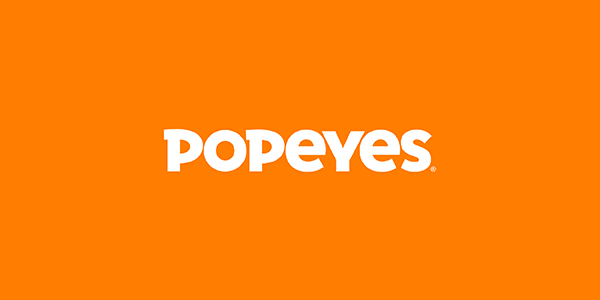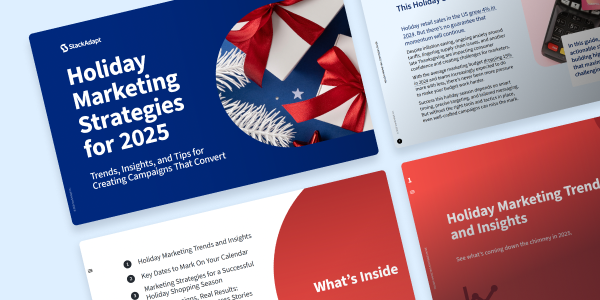Benefits of White-Labeling a Programmatic Advertising Platform

In programmatic advertising, the ultimate goal is to get the right ad in front of the right person in the right place at the right time. But, with so many ads competing for customers’ attention, that’s never been more challenging. And without the right data, inventory, or tools, it’s nearly impossible to do that precisely or at scale.
That’s where a white-label programmatic advertising solution comes in.
Whether you want to white-label a demand-side platform (DSP) or build your own in-house solution with an API integration, white-labeling can help you enhance your advertising capabilities, stand out from the competition, and generate additional revenue streams by acquiring new clients or providing solutions for your target audience and industry.
In this article, we’ll look at the five benefits of partnering with an existing platform versus building your own solution that fits your and your clients’ programmatic advertising needs. But before we go in-depth, let’s cover a few things.
What is White-Label Software?
White-label software is pre-made software that you can rebrand, use, and sell as your own without having to build it from scratch. You can do this by customizing and rebranding a platform’s interface or integrating via API, which incorporates a provider’s existing functionality into your platform.
White-label software is helpful for businesses that want to access or offer additional services, but don’t have the resources, expertise, or time to build a solution themselves.
What is a White-Label DSP?
A white-label DSP is a platform that has been custom-built for a brand, agency, or software provider on top of an existing platform, so they can access or offer their clients additional services, opening up the potential for new revenue streams.
Traditionally, when you think of a white-label DSP, you probably picture a platform offering the same benefits as a self-serve DSP, but with minor cosmetic changes, like a new URL, logo, or interface.
White-labeling isn’t just duplicating a platform and slapping on some new branding (although sometimes it’s that straightforward). It can also refer to leasing parts of a platform or a software’s specific functionality through an API to augment a company’s existing data or technology.
In programmatic advertising, this could include leveraging different channels, targeting capabilities, solutions, and other aspects of a platform. It could also involve using the whole platform to build a custom solution based on your or your client’s needs.
Companies can leverage white-label software to build a unique value, identity, and solution in the marketplace that goes beyond the reach and targeting capabilities of a single platform or channel.
5 Benefits of White-Labeling a Programmatic Advertising Platform
1. Leverage 1st-Party Data to Create Personalized Ads
First-party data has never been more valuable. It can be leveraged to create hyper-relevant and personalized ads targeted to customers who have already shown interest in your business or brand. It also provides a unique monetization opportunity for vendors who want to build their own solution and leverage their data to create additional revenue streams. First-party data is also cookieless, making it more reliable, privacy-friendly, and future-proof than 3rd-party data.
Activating and leveraging 1st-party data can be difficult without the proper systems in place.
That’s where white-label programmatic advertising software can come in to help you.
For example, StackAdapt and Snowflake partnered together to help marketers leverage their 1st-party data and activate it in campaigns to target audiences. This integration allows marketers to connect and deliver highly-targeted ads across even more channels without constantly uploading CSV files or managing relationships with multiple data partners.
2. Access to Inventory and Advertising Channels
Ad frequency is important. If a customer sees an ad too often or on the same channel, they may stop paying attention to it. If they see an ad too little, it won’t stick. Striking that right balance and ensuring you’re targeting the right audience on the right channel is key.
When you partner with an existing advertising solution, you can access additional inventory resources.
Some platforms have access to a select number of channels, publishers, and inventory. When you can only bid on a small amount of inventory, it can be difficult to reach and influence your target audience.
Building your own white-label solution allows you to take a holistic approach to supply. It gives you access to premium inventory and emerging media channels (including connected TV, audio, in-game, and digital out-of-home) that help target consumers beyond their computers.
3. In-Depth Reporting and Interactive Dashboards
Ask any Chief Marketing Officer what they’re looking to improve, and one of the main things they’ll probably say is, “I want to understand my customer better.”
As we adapt new technologies, campaign strategies, and emerging channels to reach target audiences more effectively, there has never been more data and insights available.
To understand your audience, you need proper reporting, analytics, and data visualization tools. But it can be hard to create reports that are easy to understand, accessible, and personalized for every client or company.
When you leverage an existing programmatic advertising solution, you get access to all of its interactive dashboards and custom reporting to help optimize campaigns and make data-informed decisions. This can be combined with your existing data to create reports that are easy to share with clients, gain granular insights into campaign performance, and get a deeper understanding of your audience and how to target them.
4. Get in Front of Key B2B Decision Makers
For B2B marketers, getting in front of key decision makers is essential for campaign success. That may be the end goal, but marketers may not always have the right technology and bidding capabilities at their disposal to run effective B2B campaigns.
A platform that offers ABM targeting capabilities like StackAdapt can leverage 1st-party data to segment customers based on firmographic, demographic, technographic, and intent data points to reach decision makers across multiple touch points and channels. This can help you hone in and create more personalized ad campaigns that address key pain points and resonate deeply with your targeted accounts.
5. Save Time and Money
Building your own DSP from scratch is expensive and time-consuming. First, you need to find the right people—the data engineers, scientists, and architects—to do the job. Then, you need to make connections with inventory providers and strike deals with 3rd-party partners. After that, a UI designer needs to create the interface. Finally, you have to find the talent and capital to maintain it over the long term.
That’s a lot of time, energy, and money.
Instead, businesses can tap into a platform that already exists and has all the major features they need without worrying about the costs and behind-the-scenes activities that come with building and maintaining a DSP.
Depending on your needs, building your own white-label solution can take as little as a week (and up to six to nine months for more complex projects, depending on the skillset, engineers, UX designers, and current architecture at your disposal), drastically cutting down on the time it takes to go to market.
Power Up With White-Label Programmatic Advertising
Programmatic advertising has never been more complex and competitive. White-labeling allows you to build a new solution on top of an existing platform or technology to help scale your business and create new revenue streams without wasting resources.
Explore existing platforms that offer an API integration and create your own in-house advertising solution. Request a demo today to learn more about the StackAdapt API.






